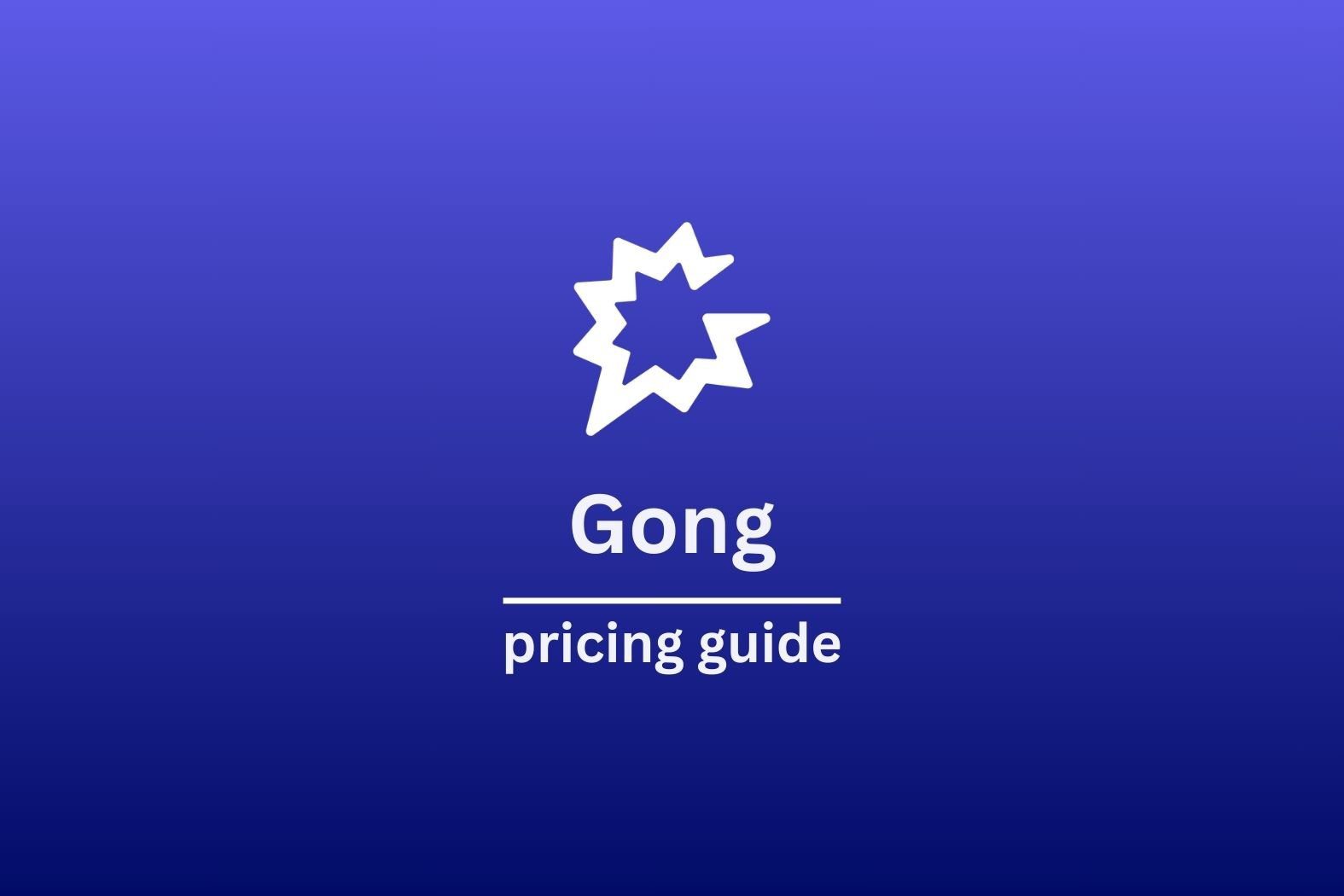Хотите заключать больше сделок и овладеть искусством переговоров? Не так ли. Применяя на практике эти двенадцать советов и приемов, вы в кратчайшие сроки поднимете свои продажи. А если у вас есть потрясающее программное обеспечение для записи разговоров, такое как tl;dv, вы сможете добиться еще больших успехов за еще меньшее время.
Мы расскажем о двенадцати вещах, которые вы должны когда нужно снижать цену и как понять, что вы просто стреляете себе в ногу, и, самое главное, как записи видеозвонков можно использовать для обучения и роста до новых высот.

Искусство ведения переговоров: 12 советов и рекомендаций
1. Активное слушание
Активное слушание не должно удивлять. Если вы хотите заключить самую выгодную сделку, вам лучше всего внимательно прислушиваться к тому, что говорят вам ваши потенциальные клиенты. Это не только поможет им почувствовать, что их ценят и уважают, но и вызовет у них больше доверия. В свою очередь, они будут больше рассказывать Вам. Имея больше информации, вы сможете лучше адаптировать свой продукт к их потребностям.
Мы написали целую статью о том, как активное обучение может улучшить продажи. Эта тема заслуживает отдельного внимания. Но ее можно (и нужно) использовать в сочетании с другими советами и рекомендациями, приведенными в этом списке, чтобы повысить свой переговорный навык и заключить больше сделок.
Для улучшения навыков аудирования, используйте записи разговоров чтобы проанализировать, насколько хорошо вы слушаете своего собеседника. Перебиваете ли вы их? Это должно быть кардинальным грехом. Проверьте, не заметил ли клиент вашего молчания - часто он бывает благодарен.
2. Сила паузы
Как и активное слушание, владение паузой заслуживает отдельной статьи отдельной статьи сама по себе. Это такая простая вещь, но пауза - просто предоставление пространства собеседнику - может сыграть огромную роль в завоевании доверия и уважения. Это не только неотъемлемая часть умения слушать, но и суперспособность.

Делая больше пауз и меньше говоря, вы даете своему собеседнику достаточно времени и пространства, чтобы высказать все, что у него на душе. Вы можете больше узнать о них и их проблемах и понять их на более глубоком уровне. Таким образом, у вас появляется больше времени для подготовки отличного ответа, который не просто предлагает продукт, а представляет собой решение проблемы в виде паззла.
Чтобы научиться делать паузы и давать собеседнику больше времени, пересматривайте предыдущие продажи, сделанные вами или вашей командой, с помощью tl;dv. Вы можете просмотреть стенограмму, чтобы знать, с чего начать, или установить временные метки во время разговора, чтобы легко вернуться к определенным частям.
3. Готовиться, снова готовиться, потом еще раз готовиться
Подготовка является ключевым моментом. Тщательно изучите как продаваемый продукт или услугу, так и потребности клиента. Предвидьте возможные возражения и опасения и подготовьте продуманные ответы на них. Такая подготовка повысит Вашу уверенность в себе и поможет успешно провести переговоры.
Нет ничего лучше для поможет вам подготовиться к питчингу, чем записи предыдущих звонков. Это особенно актуально, если вы обращаетесь к кому-то во второй, третий или четвертый раз. Информация, которую вы берете с собой на последующие встречи, очень важна для совершения продажи и заключения большего количества сделок.
4. Создавать ситуации "выиграл - выиграл
Все любят беспроигрышные ситуации. В этом, собственно, и смысл. Если сосредоточиться на решениях, выгодных обеим сторонам, то все уйдут домой довольными. Успешные переговоры - это не победа одной стороны и поражение другой, а поиск точек соприкосновения, удовлетворяющих интересы обеих сторон. Такой подход укрепляет доверие и создает основу для долгосрочных отношений.

5. Воспитывать эмпатию
Эмпатия возникает, когда вы глубоко понимаете желания и болевые точки потенциального клиента. Вы понимаете, почему им нужно решение. И так получилось, что у вас есть такое решение на продажу. Если вы соответствуете уровню энергии вашего потенциального клиента, то предложение ему решения не будет выглядеть как деловая сделка. Это будет похоже на помощь другу, предлагая ему беспроигрышную ситуацию.
Когда вы сопереживаете клиентам, они испытывают к вам больше доверия и уважения. Вы позиционируете себя как человека, которому не все равно, а не как человека, который пытается продать им то, что им не нужно. Вы понимаете, через что они проходят, потому что именно поэтому вы создали решение (возможно).
6. Поставить четкие цели
Если вы хотите, чтобы ваши переговоры прошли успешно и вы заключили больше сделок, вам необходимо четко сформулировать цели, прежде чем приступать к переговорам. Простое "заключить сделку" не подходит. Вы должны знать, что обсуждать, когда переходить к делу, когда просить потенциального клиента уточнить некоторые моменты, а когда переходить к добиванию. Кроме того, необходимо четко сформулировать призыв к действию (CTA), чтобы вы на 100% знали, что произойдет дальше.
Например, вы можете стремиться к обеспечению продажи в качестве общей цели, но при этом должны учитывать следующие моменты:
- Специфика (четко определить условия договора)
- Понять их потребности (изучение потребностей, болевых точек и возражений потенциального клиента)
- Точки отступления (Заранее определите точки отторжения, включая минимально приемлемую цену и любые другие условия, препятствующие заключению сделки)
- Уступки (определить области, в которых вы готовы сделать исключения, чтобы прийти к соглашению, а также элементы, не подлежащие обсуждению)
- Сроки (включить такие этапы, как первоначальные переговоры, демонстрация проекта и подписание контракта)
- Максимизация ценности (подчеркнуть ценность вашего решения для клиента, включая повышение эффективности, снижение затрат и конкурентные преимущества)
- Предвидеть возражения (разработать стратегии преодоления предполагаемых возражений)
- Механизм обратной связи (установить четкий способ сбора обратной связи и прояснения любых неясностей в ходе переговоров)

7. Использовать анкерное крепление
Первое предложение почти всегда будет использоваться как точка отсчета или якорь для остальных переговоров. Поэтому лучше представить первое предложение или контрпредложение стратегически. Эта начальная точка может повлиять на весь ход переговоров. Старайтесь установить такую цену, которая была бы благоприятной для вашей позиции, но в то же время оправданной с учетом рыночных условий или других факторов.
8. Установить взаимопонимание
Существует множество успешных техник продаж которые помогут вам заключать больше сделок. Установление взаимопонимания - одна из самых важных. Установление позитивных и уважительных отношений с другой стороной может улучшить процесс переговоров. Светская беседа, поиск общих интересов и проявление искреннего любопытства к их точке зрения помогут создать благоприятную атмосферу для сотрудничества.
Чтобы помочь в этом, перед звонком проверьте их на LinkedIn. Посмотрите, нет ли у вас общих интересов, которые можно использовать в качестве ледоколов. Если это последующий звонок, используйте tl;dv для повторного просмотра предыдущего звонка и проверьте резюме, составленное искусственным интеллектом чтобы освежить память.
9. Применять давление времени
Создайте ощущение срочности. Дайте своему клиенту бомбу с таймером. Убедите их действовать поспешно - но, возможно, не давайте им настоящую бомбу, иначе они могут просто убежать к вашему менее взрывоопасному конкуренту. При правильном подходе можно побудить собеседника быстрее принять решение и сделать признание.
Этому можно поучиться, просматривая записи звонков, в которых давление времени сработало в вашу пользу. Можно также повторно просмотреть записи звонков, в которых это не сработало и навредило отношениям, чтобы у сотрудников отдела продаж был реальный опыт для сравнения. Это поможет им откорректировать свой подход и найти правильный баланс для каждого конкретного клиента.

10. Зеркальное отображение
Хотя слова важныно язык тела не менее важен. На самом деле, 70% общения происходит на невербальном уровне. Тонко имитируя язык тела, речевые обороты и стиль общения потенциального клиента, вы помогаете создать ощущение связи. Другая сторона, естественно, чувствует себя непринужденно (при условии, что подражание действительно тонкое - в противном случае она будет просто напугана). В целом, успешное зеркальное отражение делает клиента более восприимчивым и согласным с вашими предложениями.
Это еще одна идеальная вещь для изучения с помощью записей звонков tl;dv. Вы можете постоянно учиться на своих прошлых звонках, пересматривая основные моменты и замечая вещи, которые вы не могли заметить во время самого звонка.
11. Фрейминг и рефрейминг
Всегда излагайте свои соображения таким образом, чтобы подчеркнуть преимущества и положительные стороны. При возникновении возражений следует переосмыслить их как возможности для взаимной выгоды. Не вступайте в дискуссию, чтобы донести свою точку зрения однако. Позвольте клиенту рассказать о причинах своих опасений, дайте ему высказаться, а затем покажите, что вы все поняли, прежде чем возражать. Это поможет сменить точку зрения с состязательной на совместную.
12. Walk Away
Знайте, когда нужно уйти. Иногда готовность отказаться от участия в переговорах может дать вам преимущество. Такая тактика показывает, что у вас есть альтернативные варианты и вы не отчаялись заключить сделку. У вас есть план действий, не подлежащий обсуждению, и вы не готовы делать исключения ни при каких обстоятельствах.
Однако использовать его следует с осторожностью. Если потенциальный клиент упрям или не понимает всей ценности предложения, переговоры могут закончиться преждевременно. Это ультиматум. Вы должны быть готовы действительно уйти, если клиент согласится.

Когда следует снижать цену и когда это приведет к обратному результату
Иногда, чтобы сделать сделку более выгодной для клиента, целесообразно снизить цену. В других случаях это очень плохая идея. Давайте узнаем, почему!
Когда целесообразно снизить цену
При столкновении с сильной конкуренцией
Если ваши конкуренты предлагают аналогичные товары или услуги по более низким ценам, вы можете остаться позади. Ваши клиенты могут легко повернуться и сказать вам, что они уходят к вашим конкурентам. Разумеется, необходимо следить за тем, чтобы поддерживать разумную норму прибыли, но оставаться конкурентоспособным - разумная идея.
При демонстрации гибкости
Предложение небольшой скидки в качестве жеста доброй воли или гибкости может способствовать установлению взаимопонимания и побудить другую сторону пойти вам навстречу. Это может быть эффективно для развития долгосрочных отношений. Удержание клиентов в конце концов, является одной из лучших маркетинговых стратегий.
При работе с дорогостоящими клиентами
Для значимых клиентов или проектов снижение цены может быть стратегическим шагом, позволяющим заключить крупную сделку или установить престижные отношения с клиентом. В сущности, вы хотите сохранить ценных клиентов в своем портфеле, поскольку они сами по себе могут приносить немалый доход. Это особенно актуально, если речь идет о клиенте, который покупает что-то оптом.

При очистке запасов
Если у вас есть излишки товарно-материальных ценностей, которые необходимо быстро переместить, то распродажа - хороший способ сделать это. Не выпускайте кота из мешка. Если вы скажете потенциальному покупателю, что вам нужно продать товар, то вся власть окажется в его руках. Вы хотите сохранить власть в переговорах, но в то же время хотите очистить свои запасы и получить доход.
Когда снижение цены может навредить вашей позиции
Девальвация вашего предложения
Вы не хотите, чтобы ваш товар или услуга казались бесполезными. Если он постоянно продается, никто не будет воспринимать его всерьез. Он определенно потеряет свою "премиальность" в глазах покупателя. Со временем это также может негативно сказаться на восприятии вашего бренда. Это начало скользкой дорожки.
Создание прецедента
Аналогично, если вы постоянно снижаете цены, клиенты будут ожидать скидок каждый раз, когда будут вести с вами переговоры. Это то, что необходимо пресекать на ранней стадии. Если это станет привычным, то от этого никуда не деться. Вы отдаете свою власть клиенту и не можете стоять на ногах. Это не только подрывает вашу рентабельность, но и делает будущие переговоры очень сложными.
Снижение маржи прибыли
Агрессивное снижение цен без учета нормы прибыли - большая ошибка. Возможно, одна из самых больших, которые можно совершить в сфере продаж. Когда вы едва получаете прибыль - или, что еще хуже, терпите убытки, - это может помешать вам инвестировать в разработку продукта, маркетинг и поддержку клиентов. В конечном итоге это может стать концом всего вашего бизнеса.
Подрыв доверия к переговорам
Если вы часто снижаете цены в ходе переговоров, то это означает, что вы готовите себе неприятности. Вас могут рассматривать как легкую мишень, что снижает доверие к вам и затрудняет поддержание твердых цен на будущих переговорах. Это создает впечатление, что вы отчаянно пытаетесь продать товар, что опять же ставит власть в руки покупателя.

Овладение техникой с помощью записей видеозвонков
Мы уже говорили о том, как важно иметь большое количество записей видеозвонков, на которых можно учиться. Вы можете пересматривать фрагменты или ролики из нескольких разных записей. Просматривая свои собственные звонки, вы можете определить области, в которых следует улучшить работу, а также заметить, что у вас получается хорошо и что следует продолжать.
Однако еще одна хитрость записи разговоров - это наблюдение за большим боссом. Как генеральный директор разговаривает со своими поставщиками? Имея доступ к таким разговорам, ваши продавцы могут учиться у главного босса. Остается надеяться, что тот, кто общается с поставщиком, также использует записи разговоров для построения более прочных отношений между заказчиком и поставщиком.
Приняв во внимание все советы и рекомендации по ведению переговоров, о которых мы здесь говорили, вы сможете наблюдать, как заключают сделки высококлассные продавцы в вашем бизнесе. Наблюдайте за их поведением. Что они делают хорошо? Как реагируют клиенты? Повторяют ли они их язык тела или тон? Используют ли они сильные слова? Является ли для них якорем хорошая цена? И есть ли у них в голове четкая цель? Вы сможете наблюдать за питчем как наблюдатель, отмечая, как улучшить свою собственную игру по заключению сделок, которую затем сможете проанализировать и сами.
Заключайте больше сделок с помощью tl;dv
Скачать tl;dv , чтобы помочь вам заключать больше сделок, - несомненно. К тому же, это совершенно бесплатно для начала работы и занимает всего несколько минут...
Так чего же вы ждете? Ваши навыки ведения переговоров не улучшатся, если вы не сможете их уверенно анализировать.





